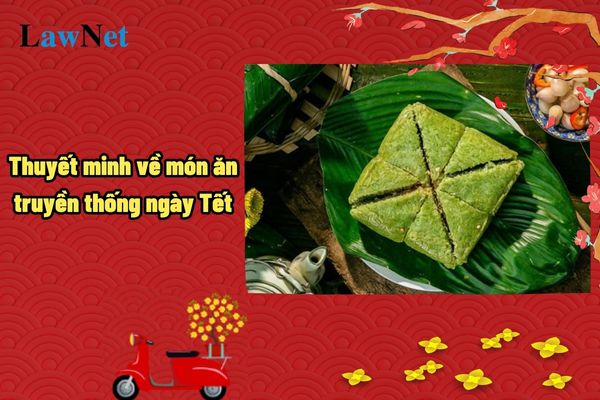What are the sample explanatory essays on traditional dishes for the Lunar New Year 2025? What are the 04 requirements for assessing 9th-grade students in Vietnam?
What are the sample explanatory essays on traditional dishes for the Lunar New Year 2025?
Students may refer to the following sample explanatory essays on traditional dishes for the Lunar New Year 2025:
|
Sample explanatory essays on traditional dishes for the Lunar New Year 2025 Sample 1 Banh Chung (Chung cake) Banh Chung, a dish that has been associated with the Lunar New Year for generations, is not only a simple dish but also carries profound meanings of culture and family sentiment. Sample 2 Xoi Gac, with its vibrant red color, is one of the indispensable dishes on the Tet feast of the Vietnamese people. Not only visually appealing, Xoi Gac also carries the meaning of wishing for luck and prosperity for the new year. Sample 3 Thit Kho Tau, a familiar and close dish in every Vietnamese family, especially during the Lunar New Year. Its rich flavor and attractive appearance have become an indispensable symbol on the Tet dining table. --- |
*Note: Information is for reference purposes only./.

What are the sample explanatory essays on traditional dishes for the Lunar New Year 2025? What are the 04 requirements for assessing 9th-grade students in Vietnam? (Image from the Internet)
What are the 04 requirements for assessing 9th-grade students in Vietnam?
According to Article 4 of Circular 22/2021/TT-BGDDT, the 04 requirements for assessing 9th-grade students in Vietnam include:
- Conduct assessment based on requirements under formal education program.
- Conduct assessment while ensuring accuracy, integrity, fairness, honesty, and objectivity.
- Conduct assessment via multiple methods, forms, techniques, and tools; combine regular assessment and periodic assessment.
- Conduct assessment for student’s improvement; prioritize motivating and encouraging efforts of students in training and learning; do not compare students with one another.
What are the regulations on regular assessment for 9th-grade Literature in Vietnam?
Under Article 6 of Circular 22/2021/TT-BGDDT:
Regular assessment
1. Regular assessment shall be conducted via: ask – answer, provide presentation, practice, experiment, produce learning products.
2. In each subject, each student shall be examined and assessed multiple times where several examinations and assessment satisfactory to teaching progress as per education plans of specialized departments are selected and the results thereof are recorded in student monitor and assessment record (by classes) in order to assess learning results of a subject according to Clause 1 Article 9 hereof as follows:
a) For subjects where assessment is conducted via feedback (does not include learning topics): choose twice each semester.
b) For subjects where assessment is conducted via both feedback and scores (does not include learning topics), choose regular assessment scores (hereinafter referred to as “DDGtx”) in each semester as follows:
- Subjects that have 35 periods/school year: 2 DDGtx.
- Subjects that have from more than 35 periods/school year to 70 periods/school year: 3 DDGtx.
- Subjects that have more than 70 periods/school year: 4 DDGtx.
....
Thus, regular assessments for 9th-grade Literature shall be conducted via: asking-answering, providing presentations, practicing, experimenting, and producing learning products.

